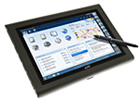
EGYPS Egypt Petroleum Show 2020
The 2020 EGYPS Egypt Petroleum Show occurs February 11-13, 2020 at the Egypt International Exhibition Center. In 2019, the event…

Many document controllers use solutions that have evolved over time and people continue to use them because they are adept with Excel, Word, Adobe and other good – but non-document control specific – tools.
Apologies to Willie Nelson, but are we “Aging with time like yesterday’s wine” or perhaps should it be “yesterday’s whine?”
When is the time to stop, assess the situation and move on to using a different approach that will not drive us to “whine” for reasons that include over work, lost documents, unknown status and processes that need too much manual work?
At what point does document control work become so cumbersome and customized that the old, manual ways of doing it brings productivity to a halt?
At some point – perhaps in the middle of a large project your company could take on – yesterday’s solution might grind to a halt. We can nurse these “solutions’ along for years but eventually we will affect the progress of the project team when our familiar system fails us and we cannot easily provide status on a document or find it after we issued it for review.
We can’t plan around these situations but we can accept the fact that we have seen them before. Everybody on the project team has access to a computer and wants to know the status of documents they need to use. Yesterday’s systems cannot provide timely enough information for these people and lack of timely information will hurt us.
Whether the task is appending a header or footer, creating a custom cover page or renaming and saving a document, yesterday’s solution is more prone to failure and error. As documents undergo reviews and people make changes to them during the project life, the project owner will want the Document Controller to keep the Manufacturer’s Record Book (MRB) up to date. The Document Controller needs to manage these documents throughout their project life to ensure the project team has the most current copy.
DocBoss permits the Document Controller to regenerate the MRB easily and automatically when the references in a document are changed upon completion of its review.
 Moving forward with document control, office and field users will use electronic tablet document readers much more than at present. We don’t always need to carry copies of the documents around with us but we should be able to access the metadata about them when we need to follow up on our documents. Tasks performed by a computer instead of relying upon an individual to manually update all references improves the integrity of the project documents. We can gain confidence that the digital information about them will provide the assurance we had when we dealt with paper copies of everything.
Moving forward with document control, office and field users will use electronic tablet document readers much more than at present. We don’t always need to carry copies of the documents around with us but we should be able to access the metadata about them when we need to follow up on our documents. Tasks performed by a computer instead of relying upon an individual to manually update all references improves the integrity of the project documents. We can gain confidence that the digital information about them will provide the assurance we had when we dealt with paper copies of everything.
How do you cope with a growing workload and possible inadequacy of presently used overly manual processes? How many documents do you handle in your “average” and “large” projects for vendors and EPC organizations?
Want to learn more about what an ideal Electronic Data Management System (EDMS) might look like?
Click here to learn more.
DocBoss is the only true document control system for
suppliers. Book a quick demo to see how we help process
equipment suppliers make more profit with less pain.